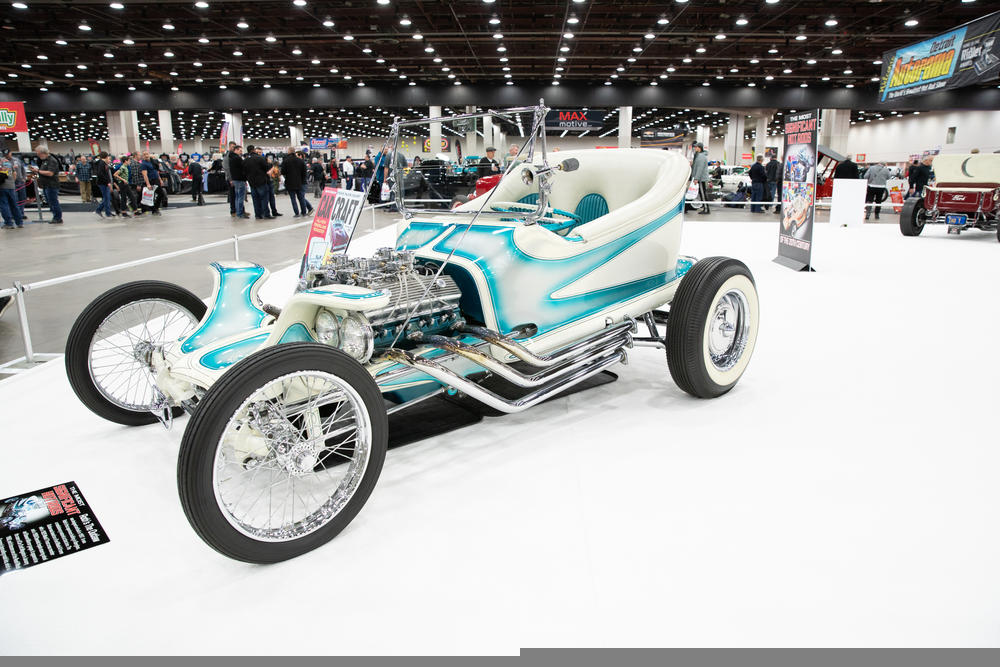In the colorful tapestry of automotive history, there are individuals who stand out not only for their mechanical prowess but also for their unconventional creativity. Among them are two legends whose names resonate through the annals of car culture: Ed Roth, affectionately known as Big Daddy, and Kenneth Robert Howard, famously called Von Dutch. These mavericks left an indelible mark on both the automotive world and popular culture, challenging norms and inspiring generations to think outside the box.

Ed Roth, a California-based car designer of the 1950s and '60s, was a trailblazer in every sense. He pioneered the use of materials like plaster of Paris to sculpt his visionary creations, which graced the pages of esteemed publications like Hot Rod and Custom Car Magazine. Roth's workshop was a breeding ground for innovation, birthing iconic vehicles like the Beatnik Bandit and the Rotar. But it wasn't just his cars that garnered attention; Roth's artistic flair extended to his hand-drawn cartoons, most notably Rat Fink.
Rat Fink, a grotesque yet captivating character, became Roth's ticket to fame, adorning not just t-shirts and posters but also the imaginations of countless enthusiasts. Roth's influence transcended mere automotive design; he was a cultural provocateur, often compared to avant-garde artists like Salvador Dali. His legacy endures through the continued popularity of Rat Fink memorabilia and the enduring allure of his eccentric designs.

Von Dutch, on the other hand, found his calling in the subtle art of pinstriping. Born Kenneth Robert Howard, he honed his craft from a young age, mesmerizing onlookers with his intricate designs. Working alongside luminaries like George Barris, Von Dutch elevated pinstriping from a mere embellishment to a form of artistic expression. His flying eyeball emblem, born from a whimsical suggestion, became an iconic symbol of his ingenuity.
Pinstriping wasn't just about decoration for Von Dutch; it was a means of transcending imperfections and imbuing cars with personality. His work was a testament to the power of creativity to transform the mundane into the extraordinary. Like Roth, Von Dutch defied convention, often sporting a third eyeball painted on his forehead—a bold declaration of his unorthodox worldview.
The legacies of Roth and Von Dutch extend far beyond the realm of automotive design. They embodied a spirit of rebellion and individualism that resonated with a generation hungry for authenticity. Their influence can be seen not just in the cars we drive but also in the broader tapestry of pop culture. From t-shirts to tattoos, their iconic imagery continues to captivate and inspire.
In a world where conformity often reigns supreme, Roth and Von Dutch remind us of the power of creative expression. They dared to be different, to push the boundaries of what was possible, and in doing so, they shaped the cultural landscape for generations to come. Theirs is a legacy of innovation, imagination, and unbridled passion—a legacy that continues to fuel the dreams of enthusiasts and artists alike.
As we navigate the highways of life, let us remember the enduring legacy of Ed Roth and Von Dutch. They were more than just designers; they were visionaries whose unconventional spirit continues to drive us forward. So, the next time you see a Rat Fink sticker or a flying eyeball emblem, take a moment to appreciate the trailblazers who dared to dream. In a world full of squares, they were the ones who dared to think outside the box.
